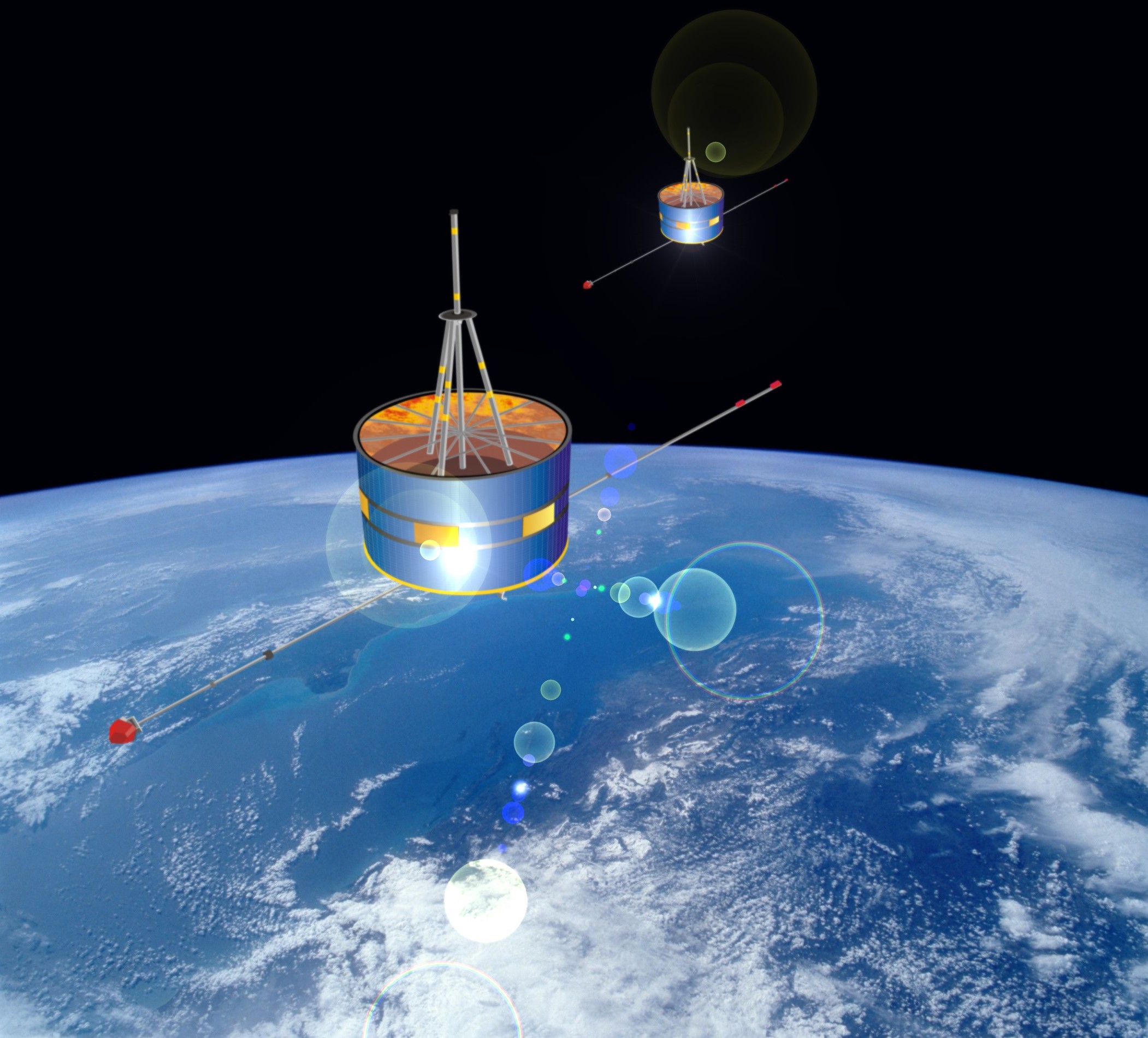DOUBLE STAR
Double Star is the first mission launched by China to explore the Earth's magnetosphere. The mission was developed jointly with Europe in 2001. It follows in the footsteps of ESA's Cluster mission, by studying the effects of the Sun on the Earth's magnetosphere.
Conducting joint studies with Cluster and Double Star should increase the overall scientific return of both missions. A key aspect of Europe's participation in the Double Star project is the inclusion of eight instruments, seven of which are identical to those flying on the four Cluster spacecraft. This reuse of instruments has many advantages for both European and Chinese scientists. Chinese institutes provide eight other experiments
As its name suggests, Double Star involves two satellites-each designed, developed, launched and operated by the China National Space Administration (CNSA).
The first called (TC-1), the "equatorial" satellite, was launched on December 29, 2003. The second "polar" (TC-2) was launched on July 25, 2004. The acronym "TC" stands for "Tan Ce” in Pinyin which means “exploration measurement”.
Access to mission data |

|
Access to mission documents |

|

Data per experiments
Here you can access data of each experience archived on this site:
ASPOC, AUX, FGM, HEED, HEPD, HIA, HID, LEID, LFEW, NUADU, PEACE, STAFF.
News and useful links
More informations, including mission descriptions, can be found in the "DSP-IWF-TN-0002" document.
Other links: CNES and ESA websites.